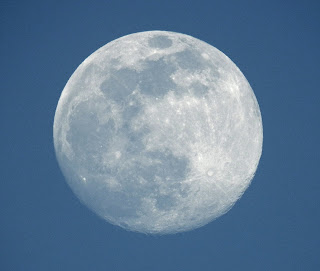NATURE
MONCTON INFORMATION LINE, April 7, 2020 (Tuesday)
To respond by e-mail, please address
your message to the information line editor, nelsonpoirier435@gmail.com .
Please advise the editor at nelsonpoirier435@gmail.com if any
errors are noted in wording or photo labelling. Note that corrections,
deletions, or delayed additions may not always appear on the Info Line and
email transcript but will always appear on the BlogSpot. For this reason, it is
recommended that those wishing to look at historical records use the BlogSpot
rather than the email transcript. The BlogSpot can always be accessed from
the website.
Edited by: Nelson Poirier nelsonpoirier435@gmail.com
Info Line # 506-384-6397 (384-NEWS)
** Ron Steeves started his faithful watch of
migration in the New Horton and Cape Enrage area Monday. The forecast called
for not much wind, but that sure was not the case for Ron, as the winds at that
site were ferocious. Ron arrived at Cape Enrage at 7:45 a.m. to find 9 GREAT
CORMORANTS [Grand Cormorant] were trying to round the point. The full moon tide
was just moving in, with the strong wind pushing it upstream. Waterside Marsh
was so completely flooded that it even pushed the BLACK DUCKS [Canard noir] out of the marsh. The rough seas made
it difficult to do accurate counts. The first flocks that went by that were
close enough were WHITE-WINGED SCOTERS [Macreuse brune], that totalled approximately 50 in
each flock. It seemed like LONG-TAILED DUCK [Harelde kakawi] day!
Ron does not usually see many of this species at that site, but several
small flocks passed by, with approximately 125 that did set down close to the
point, with a total count of 205 Long-tailed Ducks.
Ron’s Scoter count
was 375 (including the White-winged Scoters just mentioned), with a mixture of
BLACK SCOTERS [Macreuse noire] and SURF SCOTERS [Macreuse à front blanc]. Approximately 180 COMMON EIDER [Eider à duvet] were counted. Ron considered this very, very
low numbers, with several species not seen, such as Double-crested Cormorants,
Canada Geese, Red-throated Loons, Common Loons, and Ron comments he often sees Brant
off of the point.
The New Horton’s
church site was a bust, with the only possible migrants being 3 TURKEY VULTURES [Urubu à tête rouge] rocketing past in the high winds. The resident
NORTHERN HARRIERS [Busard des marais] and BALD EAGLES [Pygargue à tête blanche] were present near the church. The species
count for the day near that area was 43.
** Daryl Doucet
had his first MALE BROWN-HEADED COWBIRD [Vacher à tête brune] arrive to his Moncton feeder yard
Monday. It is expected for the first Brown-headed Cowbirds to arrive after the
other Blackbirds first arrive, and the males usually arrive ahead of the
females. Daryl also reports that his sister in Berry Mills had an albinistic AMERICAN ROBIN [Merle d'Amérique] arrive to her yard that looked very similar to the
one Brian and Annette Stone photographed in the Gorge Road area recently, so it
just may have been the same bird.
Daryl also
shared a landscape photo from a blueberry field, showing Collier Mountain, Albert
County, looking north, towards Zackie and Sweet Mountains.
Brian
Coyle continues to enjoy his flock of Cedar Waxwings around his home cleaning
up the Highbush Cranberry remnants but was surprised to see them gleaning
Bittersweet Nightshade berries in a ditch by his home. This berry has some
toxicity to mammals but suspect not to birds as have had reports of other bird
species foraging on this berry as well.
** The
moon was 98% full on Monday Night and Brian Stone took the opportunity to get a
skyscape photo of it and a full-screen view, in case of cloud cover on Tuesday
night when it is scheduled to be 100% full. In the full-screen view, you can
see the many craters that Galileo saw in 1610 thinking they were seas and named
them. The incredible advances in technology since Galileo viewed the moon with
his home-made primitive equipment!
** Jane
LeBlanc got a photo of a MALE RED-WINGED BLACKBIRD [Carouge à épaulettes] that would
appear to just be going into breeding plumage.
** We were
at our Little Southwest Miramichi camp last evening and at least two NORTHERN
SAW-WHET OWLS were actively tooting from very different directions. There actually
seemed like more but one may have been moving. We usually only hear one each
spring. I wonder if this species may be having a good year.
Nelson Poirier,
Nature Moncton
BROWN-HEADED COWBIRD (MALE). APRIL 6. DARYL DOUCET
CEDAR WAXWING. APRIL 6, 2020. BRIAN COYLE
CEDAR WAXWINGS. APRIL 6, 2020. BRIAN COYLE
MOON. APRIL 06, 2020.. BRIAN STONE
MOON. APRIL 06, 2020.. BRIAN STONE
RED WINGED BLACKBIRD. APR. 5, 2020. JANE LEBLANC
COLLIER MOUNTAIN LOOKING NORTH TO ZACKIE AND SWEET MOUNTAINS. APRIL 6, 2020. DARYL DOUCET






